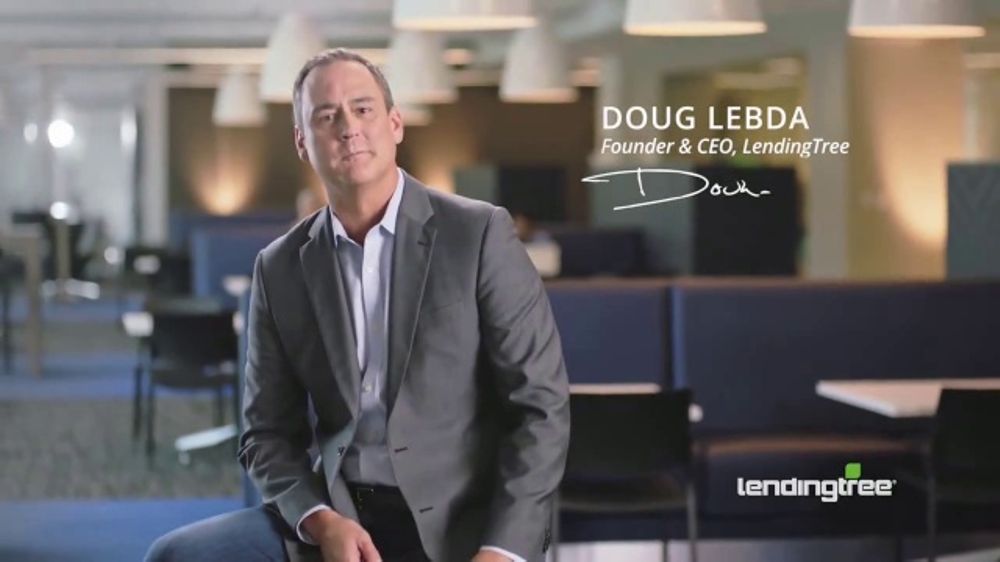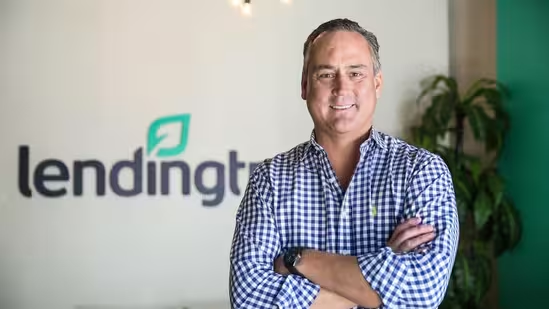
In the world of finance and fintech, few names resonate as strongly as Doug Lebda. As the founder and longtime CEO of LendingTree, Lebda reimagined how borrowers interact with banks, lenders, and financial products. His life, vision, and decisions offer valuable lessons for investors, entrepreneurs, and finance enthusiasts. In this article, we will explore:
- The life and career of Doug Lebda
- How LendingTree disrupted the banking / lending industry
- Lebda’s approach to investment (both personal and strategic)
- Key lessons for investors and startups
- Outlook: how his legacy may shape the future of fintech and banking
By weaving narrative, insights, and practical takeaways, this article aims to attract readers interested in finance, fintech, entrepreneurship, investing, and banking — and help your blog gain authority in that domain.
1. Who was Doug Lebda? A brief biography
Early life and education
Doug Lebda grew up in Lewisburg, Pennsylvania. allamericanspeakers.com+3Wikipédia+3VISTA.Today+3 He later studied at Bucknell University, earning a bachelor’s degree in business administration. Wikipédia+3allamericanspeakers.com+3clay.com+3 He also attended the Darden School of Business at the University of Virginia. allamericanspeakers.com+3Wikipédia+3clay.com+3 While at Darden, he began conceiving what would become LendingTree — and ultimately decided to leave business school to build it. allamericanspeakers.com+3Wikipédia+3Wikipédia+3
Before founding his venture, Lebda worked as an auditor and consultant at PricewaterhouseCoopers (PwC) from 1992 to 1996. Wikipédia+3allamericanspeakers.com+3clay.com+3
The founding of LendingTree & career highlights
Doug Lebda founded his first company, initially named CreditSource USA, in late 1996, after being frustrated by the complexity and opacity of shopping for a mortgage. clay.com+3Wikipédia+3allamericanspeakers.com+3 The next year he rebranded to LendingTree and launched online in 1998. allamericanspeakers.com+3Wikipédia+3clay.com+3

LendingTree went public in 2000, becoming one of the early dot-com era financial technology plays. Wikipédia+3Wikipédia+3allamericanspeakers.com+3 In 2003, it was acquired by IAC/InterActiveCorp, a large conglomerate in the Internet space. Bloomberg+3Wikipédia+3allamericanspeakers.com+3 Lebda later served as President & COO of IAC (2005–2008). allamericanspeakers.com+2clay.com+2 In 2008, LendingTree was spun out from IAC (under the holding company Tree.com) and re-focused on its core business. Wikipédia+3Wikipédia+3allamericanspeakers.com+3
Beyond LendingTree, Lebda co-founded Tykoon, a financial platform for children and families (focusing on money education). Wikipédia+2allamericanspeakers.com+2
Tragically, on October 12, 2025, Doug Lebda died in an all-terrain vehicle (ATV) accident at his family farm in North Carolina. Business Insider+7Wikipédia+7CBS News+7 LendingTree’s board swiftly named Scott Peyree (COO and President) as the new CEO, and Steve Ozonian as Chairman. AP News+3charlotteobserver.com+3Wikipédia+3
Lebda’s life story is more than a founder’s arc — it’s a narrative of vision, disruption, and the intersection between banking and technology.

2. How LendingTree disrupted banking & lending
The problem with traditional mortgage shopping
Before the rise of online marketplaces, consumers who wanted a mortgage typically had to approach individual banks, negotiate terms, gather paperwork, and compare offers manually. This process lacked transparency, was time consuming, and often disadvantaged consumers who weren’t expert negotiators.
Doug Lebda saw this friction firsthand when he tried to secure a mortgage. He realized that if banks competed for borrower business, consumers would win better rates and terms. That insight became the founding idea of LendingTree. charlotteledger.substack.com+4allamericanspeakers.com+4Wikipédia+4
The LendingTree marketplace model
LendingTree created a digital marketplace: potential borrowers submit their financial profile and loan request once, and multiple lenders bid or send offers. Borrowers can then compare rates, terms, and fees side by side. This model effectively made banks compete on pricing, rather than letting banks dictate terms unilaterally.
Because of this, LendingTree:

- Increased competition among lenders
- Reduced friction and time for borrowers
- Introduced transparency in fees, rates, and conditions
- Allowed better matching between borrower risk profiles and lender appetites
Over time, LendingTree expanded beyond just mortgages into personal loans, credit cards, insurance, student loans, and deposit products. charlotteledger.substack.com+3Wikipédia+3clay.com+3
Strategic acquisitions & expansion
To deepen its presence in the financial services ecosystem, LendingTree acquired or integrated several related brands and platforms, such as CompareCards, ValuePenguin, DepositAccounts, and others. Wikipédia+2allamericanspeakers.com+2 These acquisitions allowed LendingTree to offer not just loan comparisons but also credit card comparisons, insurance quotes, deposit rate comparisons, and broader personal finance tools.
Furthermore, LendingTree’s backing by IAC and its spin-out period helped it consolidate infrastructure, marketing, and cross-digital capabilities. charlotteledger.substack.com+3Wikipédia+3allamericanspeakers.com+3
Impact on the banking industry
LendingTree and similar fintech platforms have forced banks to evolve:
- Banks must compete more on price and terms rather than simply relying on customer inertia.
- Digital distribution and comparison become essential, pushing banks to streamline their online interfaces, APIs, and integration with fintech.
- Risk segmentation and algorithmic underwriting gain importance — lenders must better understand the borrower to bid competitively.
- Partnerships between traditional banks and fintechs increase (some banks feed LendingTree, others build their own portals).
In short, LendingTree helped democratize access to borrowing and catalyzed a more fluid, competitive financial marketplace.

3. Lebda’s approach to investing — personal & strategic
Doug Lebda was not just a fintech founder — he was also an investor, both in his own ventures and in personal real estate and startups. His investing decisions, successes, and failures are instructive.
Real estate investments
One of Lebda’s well-known personal investments: he and his father invested $750,000 in a single-family home in the Outer Banks (North Carolina) which they turned into a rental and later sold near $1 million — a decent gain. VISTA.Today
However, he also admitted to missteps. He invested $550,000 in a company named Recyclebank, which rewarded points to homeowners for recycling behavior. That venture did not scale as hoped, and Lebda cited the difficulty of scaling local business models as a key learning. VISTA.Today
These examples show that even a successful fintech entrepreneur faces challenges in outside investments — especially when moving outside one’s core domain.
Investment mindset & strategic bets
From Lebda’s interviews and reflections, some recurring principles emerge:
- Solve a problem you personally feel
Lebda often said that many of his ideas come from pain points he experienced. LendingTree itself came from his frustration with mortgage shopping. clay.com+3allamericanspeakers.com+3charlotteledger.substack.com+3 - Validate demand early and cheaply
In one recounting, he used a small advertisement on Yahoo (cost ~$500) to test if people would submit for a mortgage marketplace. That lean experiment validated consumer demand before scaling. Business Insider - Partner with technical talent
A good entrepreneur complements domain vision with strong technical execution. Lebda emphasized bringing in cofounders or technical leads who can build robust systems. Business Insider - Automate repetitive tasks & focus on unique leverage
As his firms grew, Lebda advocated delegating or automating operations so that leadership focuses on decisions only they can make. Business Insider - Be context-aware in leadership
Leadership style should adapt — sometimes directive, sometimes orchestral, sometimes coaching. The context (startup stage, crisis vs growth) changes the role of the CEO. Business Insider - Diversify but stay relevant
While entering adjacent verticals (credit cards, insurance, deposit products) made sense given LendingTree’s core match function, Lebda avoided random bets too far outside his zone of competence.
These principles can guide both startup founders and investors in selecting ventures and allocating capital.

4. Key lessons for investors, startups, and finance professionals
From Doug Lebda’s journey, we can distill concrete lessons applicable to investing, fintech, banking, and entrepreneurship.
4.1 Find friction and solve it
The greatest businesses often emerge by reducing friction between users and complex systems. Mortgage shopping was messy — Lebda turned that into an opportunity. As an investor or founder, look for such inefficiencies in banking, credit, insurers, or personal finance.
4.2 Leverage platforms & marketplaces
Rather than being a single lender or niche player, LendingTree built a marketplace — supplying value by aggregating demand and letting providers compete. In many financial domains, platform models outperform traditional monolithic models. Investors should prize scalable platforms with network effects.
4.3 Focus on unit economics & margins
Marketplace companies must earn enough per transaction to cover acquisition, fraud, risk, and operations. Lebda’s leadership steered LendingTree to profitable growth, not just scale for scale’s sake. Investors must scrutinize not just growth but profitability and sustainability.
4.4 Adapt & expand adjacent verticals carefully
Expansion into adjacent product areas (credit cards, insurance, deposit products) helped LendingTree become more of a “financial supermarket.” But such moves must align with core competencies and data/traffic advantages. Stretching too far can dilute focus and brand.
4.5 Embrace regulatory risk and compliance
Operating in finance means dealing with heavy regulation (consumer protection, disclosure, privacy, lending laws). Any fintech or startup must budget for compliance, legal costs, and regulatory changes. Lebda’s success hinged on navigating banking regulations while maintaining user trust.
4.6 Leadership evolves
What works at founding stage doesn’t always suffice at growth stage. Lebda’s shift in roles — from hands-on founder to strategic leader — underscores the need for leaders to grow, delegate, and reshuffle focus over time.
4.7 Learn from failure
Lebda’s experience with Recyclebank (and self-confessed mistakes) highlight that failure is part of the journey. Investors should not overpenalize missteps — but they should analyze them, capture the lessons, and pivot intelligently.
5. Legacy & future outlook: what comes next?
Succession & institutional strength
LendingTree proved resilient — even in the wake of Lebda’s tragic death, the company had a strong management bench. Scott Peyree was elevated to CEO, and Steve Ozonian to Chairman. Wikipédia+3Barron’s+3Business Insider+3 This suggests Lebda built more than a personality-driven venture — he built an institution.
The firm’s continued success will depend on whether that institutional backbone can carry the vision forward.
Fintech consolidation & partnerships
The fintech space is consolidating: banks, insurtechs, lending platforms, credit scoring systems, BNPL, embedded finance — all are converging. LendingTree’s platform model is well positioned to play a central aggregator role.
Investors may see new opportunities in API-first infrastructure, embedded credit, open banking ecosystems, and AI-driven underwriting — all areas that build on what Lebda’s work pioneered.
Democratization of finance
LendingTree’s core mission was to empower consumers — give them choice, transparency, and access. The next frontier is extending that mission to underserved markets, international geographies, lower-income borrowers, and more inclusive credit models.
Data, AI, credit scoring
As AI and machine learning models improve, the power of platforms with large datasets becomes even more valuable. LendingTree, with its funnel of borrower leads and historical lending data, is well positioned to exploit AI models for credit scoring, risk modeling, personalized offers, and fraud detection.
Investment returns & valuation
For investors, platforms like LendingTree that combine recurring revenue, data moat, and network effects may provide superior risk-adjusted returns — especially if paired with disciplined growth, cost control, and regulatory compliance. The crash of a founder does not necessarily doom a firm if fundamentals are strong.

